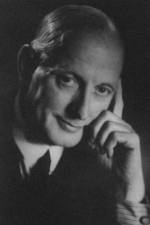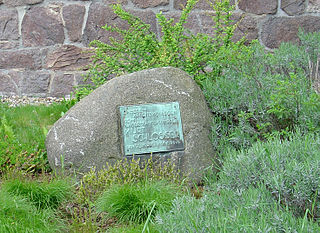 W
WKlaus Bonhoeffer was a German jurist and resistance fighter against the Nazi régime who was executed after the July 1944 plot to kill Hitler.
 W
WErika von Brockdorff was a German resistance fighter against the Nazi régime during the Second World War. Brockdorff was a member of what the Nazi authorities termed the Red Orchestra resistance movement.
 W
WFritz Erich Fellgiebel was a German Army general and a conspirator in the 20 July plot to assassinate Nazi dictator Adolf Hitler. In 1929, Fellgiebel became head of the cipher bureau of the Reichswehrministerium, which would eventually become the OKW/Chi. He was a signals specialist and was instrumental in introducing a common enciphering machine, the Enigma machine. However, he was unsuccessful in promoting a single cipher agency to coordinate all operations, as was demanded by OKW/Chi and was still blocked by Joachim von Ribbentrop, Heinrich Himmler and Hermann Göring until autumn 1943. It was not achieved until General Albert Praun took over the post.
 W
WCarl Friedrich Goerdeler was a monarchist conservative German politician, executive, economist, civil servant and opponent of the Nazi regime. He opposed some of the anti-Jewish policies while he held office and was opposed to the Holocaust.
 W
WFritz Hermann Goerdeler was a German jurist and resistance fighter.
 W
WHelene Gotthold was a Jehovah's Witness who was guillotined by Nazi Germany at Plötzensee Prison. She was charged with giving asylum to men who refused to fight for the Nazis and for holding illegal meetings for her faith.
 W
WAlbrecht von Hagen was a German jurist and a resistance fighter in the time of the Third Reich.
 W
WGustav Heistermann von Ziehlberg was a general in the Wehrmacht of Nazi Germany during World War II. He was a recipient of the Knight's Cross of the Iron Cross. Convicted in connection with the 20 July plot, he was sentenced to death and executed by firing squad.
 W
WArthur Hoffmann was a German resistance fighter against the Nazi régime in World War II.
 W
WOtto Carl Kiep was the Chief of the Reich Press Office (Reichspresseamt). He became involved with the resistance against the Nazis and was executed in 1944.
 W
WHans Koch was a German lawyer, a member of the Confessional Church and a member of the German resistance against Nazism.
 W
WWolfgang Kusserow was executed by guillotine at Brandenburg-Görden Prison for conscientiously objecting induction into the German Army because of his religious beliefs as a Jehovah's Witness.
 W
WThe Lübeck Martyrs were three Roman Catholic priests – Johannes Prassek, Eduard Müller and Hermann Lange – and the Evangelical-Lutheran pastor Karl Friedrich Stellbrink. All four were executed by beheading on 10 November 1943 less than 3 minutes apart from each other at Hamburg's Holstenglacis Prison. Eyewitnesses reported that the blood of the four clergymen literally ran together on the guillotine and on the floor. This impressed contemporaries as a symbol of the ecumenical character of the men's work and witness. That interpretation is supported by their last letters from prison, and statements they themselves made during their time of suffering, torture and imprisonment. "We are like brothers," Hermann Lange said.
 W
WMichael Graf von Matuschka was a German politician who took part in the 20 July plot.
 W
WAlbert Merz was a German Christadelphian who was executed for refusing to bear arms in the Second World War.
 W
WKurt Schlosser was a German cabinet-maker, climber, and an active Communist.
 W
WAlexander Schmorell was a Russian-German student at Munich University who, with five others, formed a resistance group known as White Rose which was active against the Nazi German regime from June 1942 to February 1943. In 2012, he was glorified as a saint and passion bearer by the Russian Orthodox Church Outside Russia.
 W
WErich Maria Remarque was a German novelist. His landmark novel All Quiet on the Western Front (1928), about the German military experience of World War I, was an international best-seller which created a new literary genre, and was subsequently made into the film All Quiet on the Western Front (1930).
 W
WFritz-Dietlof Graf von der Schulenburg was a German government official and a member of the German Resistance in the 20 July Plot against Adolf Hitler.
 W
WUlrich-Wilhelm Graf von Schwerin von Schwanenfeld was a German landowner, officer, and resistance fighter against the Nazi régime. His name is commonly shortened to Schwerin.
 W
WHellmuth Stieff was a German general and a member of the OKH during World War II. He took part in attempts by the German resistance to assassinate Adolf Hitler on 7 and 20 July 1944.
 W
WElisabeth Adelheid Hildegard von Thadden was a German progressive educator and a resistance fighter against the Nazi régime as a member of the Solf Circle. She was sentenced to death for conspiring to commit high treason and undermining the fighting forces (Wehrkraftzersetzung).
 W
WNikolaus Graf von Üxküll-Gyllenband was a German businessman who took part in the 20 July plot.
 W
WJob Wilhelm Georg Erdmann Erwin von Witzleben was a German field marshal in the Wehrmacht during the Second World War. A leading conspirator in the 20 July plot to assassinate Adolf Hitler, he was designated to become Commander-in-Chief of the Wehrmacht in a post-Nazi regime had the plot succeeded.
 W
WPeter Graf Yorck von Wartenburg was a German jurist and a member of the German Resistance against Nazism. He studied law and politics in Bonn and Breslau from 1923 to 1926, gaining his doctorate in Breslau in 1927 and passing the civil service entrance examination for lawyers in Berlin in 1930. He married Marion Winter that same year.